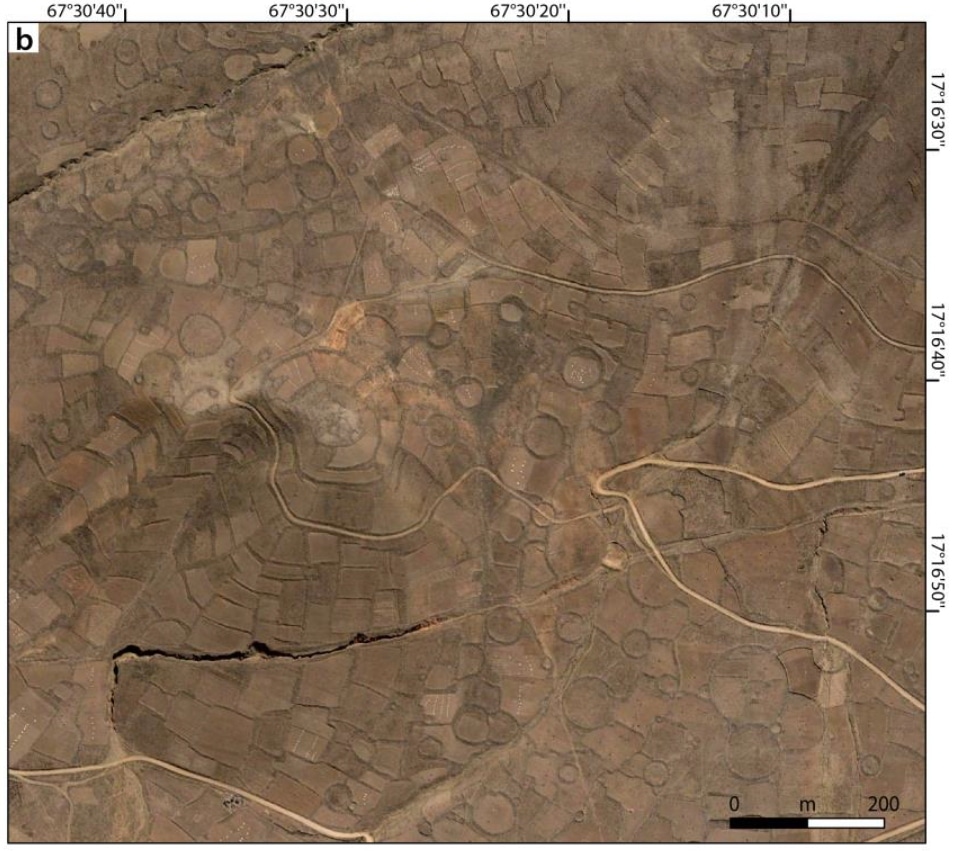Catastrophic soil erosion coincided with wetter conditions and the transition from hunter-gathering to agropastoralism in the Altiplano region of the central Andes.
The study published in Nature Communications was conducted by an international group of researchers from Switzerland, Czechia, Germany, and Denmark, including GFÚ senior researcher, Dr John Jansen, who conceptualized the approach together with the lead auther, Dr Kristina Hippe.
Caption 1: These hilltop crests have experienced an increase in erosion rate of 1–2 orders of magnitude, or a discrete stripping of 1–2 m of soil between about 2600 and 1100 years ago. (Photo by K. Hippe)
Key to the study was the measurement of rare isotopes in soils and rocks created by the bombardment of Earth’s surface by cosmic rays. Quantifying the abundances of in situ-produced cosmogenic carbon-14, beryllium-10 and aluminium-26 directly on farmland hillslopes is a new advance in the study of how human activities have shaped landscapes over millennia.
These findings join the growing support for a strong human imprint, known as the Early Anthropocene, beginning thousands of years before the Industrial Era.
Caption 2: Extensive array of stone structures that can be observed throughout the study area. These structures include livestock enclosures and low walls marking field boundaries; many are still maintained by local communities. The origin of these structures is undated. (Image source: Google Earth, Map data: Google, Maxar Technologies)



